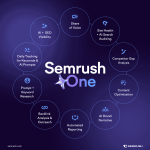The freedom of remote work has changed how teams operate—but it hasn’t changed the fact that people still get sick. What has changed is how illness is reported, tracked, and understood when employees are scattered across cities, time zones, and home offices.
For companies managing distributed teams, one of the biggest challenges is maintaining a consistent and respectful sick leave process. Without face-to-face check-ins or spontaneous hallway conversations, the need for structure becomes even more important.
That’s where legitimate digital doctor’s notes come in—not just as documentation, but as a tool for transparency, trust, and stronger remote engagement. Here’s what you need to know about them.
The Visibility Gap: Why Sick Leave Gets Complicated in Remote Teams
In remote work environments, the signals we rely on in physical offices—body language, tone of voice, simply seeing someone under the weather—are missing. A message like “I’m feeling off today” sent via Slack or email can mean different things to different people. Is the employee officially on sick leave? Are they stepping away for a few hours or trying to work through it? Without clear policies and documentation, the answer often depends on assumptions.
This ambiguity creates problems for everyone. Managers may hesitate to follow up, unsure if they’re overstepping or not taking someone seriously. HR teams may struggle to log sick days accurately or fairly across departments. And employees themselves might downplay their symptoms or stay online out of fear they’ll be seen as uncommitted. In many cases, they work through illness—not because they want to, but because the process for calling out feels vague or complicated.
This pattern isn’t just inefficient—it’s harmful to team culture. When people don’t feel they can take time off without raising questions, they’re less likely to rest when they need to. Over time, that leads to burnout, resentment, and a breakdown in trust. Remote work offers flexibility, but without structure, that flexibility becomes a burden.
Introducing a system for legitimate, digital doctor’s notes helps restore that structure. As Dr. Jason Buchwald, Emergency Medicine Physician and Senior Medical Reviewer at TrustMedical, explains: “Remote employees still get sick, and companies must adapt accordingly. A real doctors note for work, issued online, provides HR departments with trustworthy documentation without disrupting the home-office flow. It also builds credibility in virtual teams and ensures that time-off protocols are consistent and respected.”
By creating a clear and secure way to document sick leave, companies close the visibility gap. Employees don’t have to over-explain or prove anything beyond the note itself. Managers get the clarity they need to plan around absences. And HR can maintain accurate records across all teams—remote, hybrid, or otherwise.
It’s a small change that brings consistency and fairness to a system that remote teams need more than ever.
Why Digital Doctor’s Notes Matter for Remote Teams
When your team works from different locations, having clear systems in place becomes essential. One area where many companies struggle is sick leave. Without a simple and fair process, remote employees are often left guessing—what counts as a valid sick day, how should it be reported, and will anyone actually take it seriously?
That uncertainty leads to problems. Some people might push through illness and keep working, which delays recovery and affects performance. Others may avoid taking sick leave altogether because they don’t want to deal with explaining themselves over email or video calls. Over time, this can cause stress, burnout, and low morale.
Using digital doctor’s notes helps solve that. It gives your remote staff a structured, private, and convenient way to confirm they’re unwell and need time off. No clinic visits. No unnecessary pressure. Just a quick online consultation with a licensed doctor, followed by a formal, verifiable note that can be submitted to HR or a manager right away.
What makes this even more effective is consistency. Whether your employee lives in Brooklyn, Austin, or a small town two states away, they’re following the same process. That builds a sense of fairness across your team. Everyone understands what’s expected, and no one feels left out because of location or schedule.
It also sends a clear message: your company respects time off as a legitimate part of working life—even when that work happens from home. And that message builds trust.
How Online Notes Improve Communication and Accountability
Remote work depends on strong communication, but it’s easy for things to get lost in translation—especially when it comes to time off. A casual “I’m not feeling well today” in Slack might be seen as a personal update by some, and an official sick day by others. Without clear documentation, HR teams and managers are left to interpret those messages on their own.
That’s where online doctor’s notes make a difference. They give everyone a clear signal: this person consulted a medical professional and was advised to take time off. It turns vague updates into formal records, which are easier to track and manage across teams.
For HR, this means less follow-up and fewer questions. For managers, it gives a reliable point of reference when planning workloads. And for employees, it removes the awkwardness of having to justify being sick. They don’t need to overshare, argue, or prove anything beyond what the note already confirms.
This level of clarity supports accountability without feeling harsh. It’s not about monitoring people—it’s about giving everyone the tools they need to stay on the same page. When sick leave is documented properly, misunderstandings are avoided, team planning improves, and everyone has a clearer sense of who’s available and when.
That kind of structure helps remote teams stay connected and balanced—even when they’re working from different places.
Impact on Employee Engagement and Well-being
When remote employees know they can take time off without friction, it changes how they feel about their work. It tells them that their health is taken seriously and that they don’t need to hide behind their screen when they’re unwell. That kind of message matters—especially in a remote environment where people can easily feel isolated or disconnected.
Having access to a quick and legitimate doctor’s note removes the fear of being questioned or judged. It takes pressure off employees who might otherwise work through headaches, anxiety, or a bad cold just to avoid raising a flag. Instead, they’re given space to rest, recover, and return with a clear head. That’s not just good for health—it’s good for productivity.
Htet Aung Shine, Co-Founder of NextClinic explains, “Trust plays a big role here. When companies make sick leave easy and respectful, employees feel supported. And when they feel supported, they’re more likely to stay engaged, communicate openly, and take ownership of their work. This is especially true in remote teams, where day-to-day interactions are limited and policies speak louder than hallway conversations.”
Offering digital documentation doesn’t just make sick leave smoother—it tells your team, “We’ve got your back.” And that kind of trust shows up in better performance, better retention, and a more positive work culture.
Best Practices for Integrating Online Notes into Remote Policies
If you’re updating your sick leave process to include online doctor’s notes, start by keeping things simple and clear. Employees should know exactly what’s required when they’re unwell, who to notify, and how to submit their documentation. Clarity helps everyone feel confident using the system—and reduces unnecessary follow-up.
First, update your official leave policy to confirm that digital doctor’s notes are accepted. This helps remove doubt and sets a consistent standard across all teams. Specify what the note should include: the employee’s name, the date of consultation, the provider’s credentials, and the suggested rest period.
Second, recommend a few trusted telehealth platforms. This gives employees direction, especially if they’ve never used one before. You don’t have to limit their options—but offering suggestions adds structure and helps ensure the notes are coming from licensed professionals.
Third, train your managers and HR team to recognize and process digital notes quickly. Build a workflow that includes checking the document, logging the time off, and confirming the return-to-work timeline. The smoother this process is internally, the more your team will trust and use it.
Finally, frame this policy update as part of your broader commitment to employee well-being. Let people know it’s about support, not control. When sick leave is treated with care and efficiency, it becomes something employees feel safe using—not something they try to avoid.
Conclusion
Remote work has reshaped how teams operate, but the need for clear, supportive sick leave policies hasn’t changed. If anything, it’s become more important. Digital doctor’s notes give remote employees a simple, secure way to take time off without confusion, delay, or judgment.
For employers, this means better documentation, smoother workflows, and a stronger sense of trust across virtual teams. For employees, it’s a reminder that their health is valued—even if they’re working from home.
By integrating legitimate online doctor’s notes into your sick leave policy, you’re not just updating a process—you’re creating a more engaged, balanced, and healthier work culture that’s built for the way people work now.
Lynn Martelli is an editor at Readability. She received her MFA in Creative Writing from Antioch University and has worked as an editor for over 10 years. Lynn has edited a wide variety of books, including fiction, non-fiction, memoirs, and more. In her free time, Lynn enjoys reading, writing, and spending time with her family and friends.















